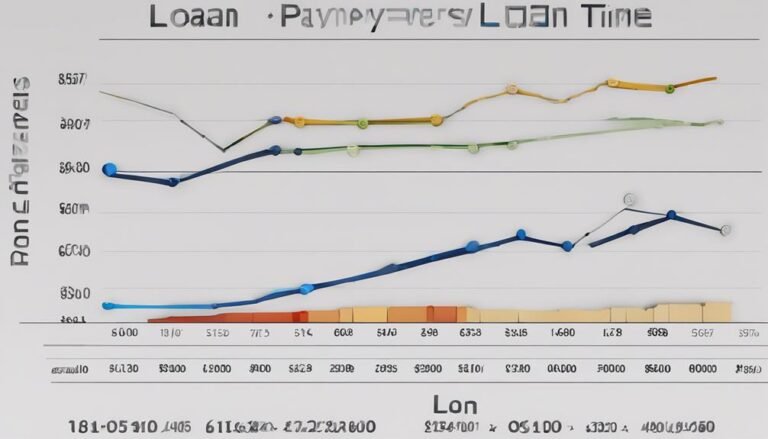Tulipmania: About the Dutch Tulip Bulb Market Bubble
Tulipmania refers to the Dutch Tulip Bulb Market Bubble in the 17th century Netherlands. Stemming from tulips' introduction in the 16th century, they evolved from novelties to status symbols for the wealthy. The market bubble was fueled by speculation, leading to skyrocketing prices. The event highlighted the impact of irrational exuberance on economic structures. Lessons from Tulipmania emphasize the importance of research and rational decision-making in financial markets. These historical insights offer parallels to modern speculative trends. Learn more about the societal, economic, and psychological ramifications of this iconic event.
Key Takeaways
- Tulipmania originated in Holland during 17th century.
- Speculative frenzy led to tulip bulb prices skyrocketing.
- Tulip bulbs were traded at exorbitant values.
- The bubble eventually burst, causing significant financial losses.
- Tulipmania serves as a cautionary tale against speculative excesses.
Origins of Tulipmania
The origins of Tulipmania can be traced back to the introduction of tulips to Europe in the 16th century through trade routes. These vibrant flowers evolved from exotic novelties to coveted luxury items for the affluent elite. As tulips made their way into European soil, particularly in countries like the Netherlands, they quickly captured the attention of the aristocracy and wealthy individuals. They sought to adorn their gardens with these exotic blooms. The professional cultivation of tulips in Holland further fueled their desirability, leading to a booming market for rare and exquisite tulip varieties. This transformation from trade novelties to symbols of affluent luxury set the stage for the unprecedented speculation and frenzy that would later characterize the Dutch Tulip Bulb Market Bubble.
Economic Impact of Tulipmania
Following the evolution of tulips from exotic novelties to symbols of affluent luxury, the economic impact of Tulipmania in Holland during the 1600s reverberated through various facets of society, leaving a lasting imprint on both financial landscapes and societal norms.
The financial consequences of Tulipmania were profound, as market speculation drove tulip bulb values to unprecedented levels. The speculative frenzy resulted in the trading of rare bulbs for exorbitant amounts, with prices soaring to extremes. This unsustainable market speculation eventually led to a sharp downturn, causing significant financial losses for many involved.
The aftermath of Tulipmania highlighted the dangers of speculative bubbles and served as a cautionary tale against excessive risk-taking in the pursuit of quick profits.
Societal Ramifications of Tulipmania
Societal dynamics shifted drastically during the tumultuous period of Tulipmania in Holland, revealing intricate layers of human behavior and economic interplay.
The social consequences of Tulipmania were profound, as the obsession with tulip bulbs led to a breakdown in traditional economic norms. The cultural significance of this period highlighted the fragility of market sentiment and the impact of speculative bubbles on societal structures.
Tulipmania exposed the vulnerabilities of individuals and institutions to irrational exuberance, resulting in financial distress and disillusionment. The aftermath of Tulipmania prompted a reevaluation of values and practices, emphasizing the importance of prudence and moderation in economic activities.
This episode serves as a cautionary tale about the dangers of unchecked speculation and its broader implications on society.
Lessons From Tulipmania
Analyzing the economic repercussions of the Dutch Tulip Bulb Market Bubble provides valuable insights into speculative behavior and its lasting effects on financial markets. Tulipmania serves as a classic example of how psychological effects, such as greed and herd mentality, can drive prices to irrational levels.
The investment psychology during this period highlights the dangers of speculative trading based on perceived scarcity and social status. Lessons from Tulipmania emphasize the importance of conducting thorough research, diversifying investments, and maintaining a rational approach to financial decision-making.
Understanding the psychological factors that contributed to the tulip bubble can help investors recognize similar patterns in modern markets and avoid falling prey to speculative bubbles like those seen in cryptocurrencies.
Tulipmania in Modern Context
Incorporating historical precedents like the Dutch Tulip Bulb Market Bubble into the context of modern financial landscapes allows for insightful parallels to be drawn regarding speculative trends and market behavior. The comparison of tulipmania with modern market bubbles, such as cryptocurrencies, reveals similarities in speculative pricing behaviors.
Both phenomena exhibit instances of irrational exuberance driving prices to unsustainable levels, leading to eventual market corrections. The speculative frenzy that surrounded tulip bulbs in the 17th century mirrors the volatile pricing dynamics seen in the cryptocurrency market today.
Conclusion
To sum up, the Dutch Tulip Bulb Market Bubble, famously known as Tulipmania, serves as a cautionary tale of speculative excess and the dangers of unchecked greed in financial markets.
While the frenzy of tulip speculation in the early 17th century led to staggering prices and eventual collapse, the enduring legacy of Tulipmania continues to offer valuable insights into the cyclical nature of market bubbles and the importance of prudent investing practices in avoiding financial calamity.







